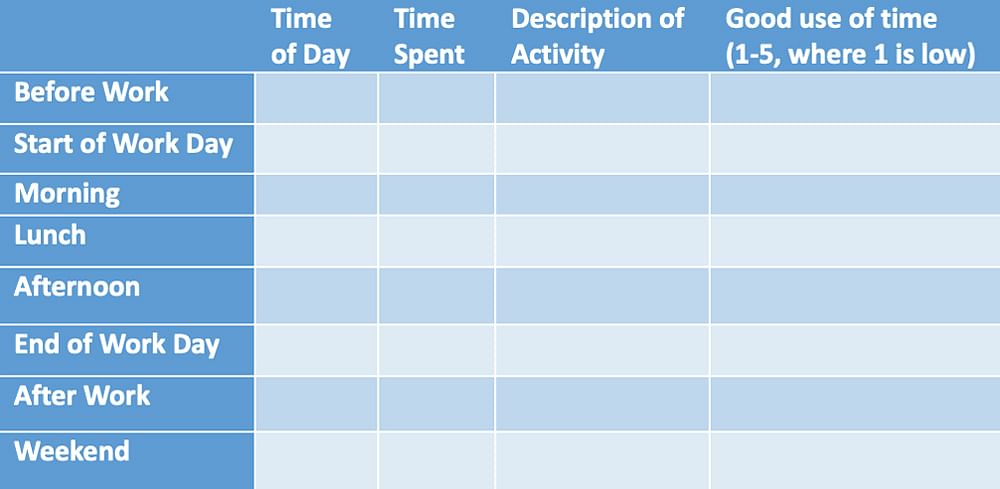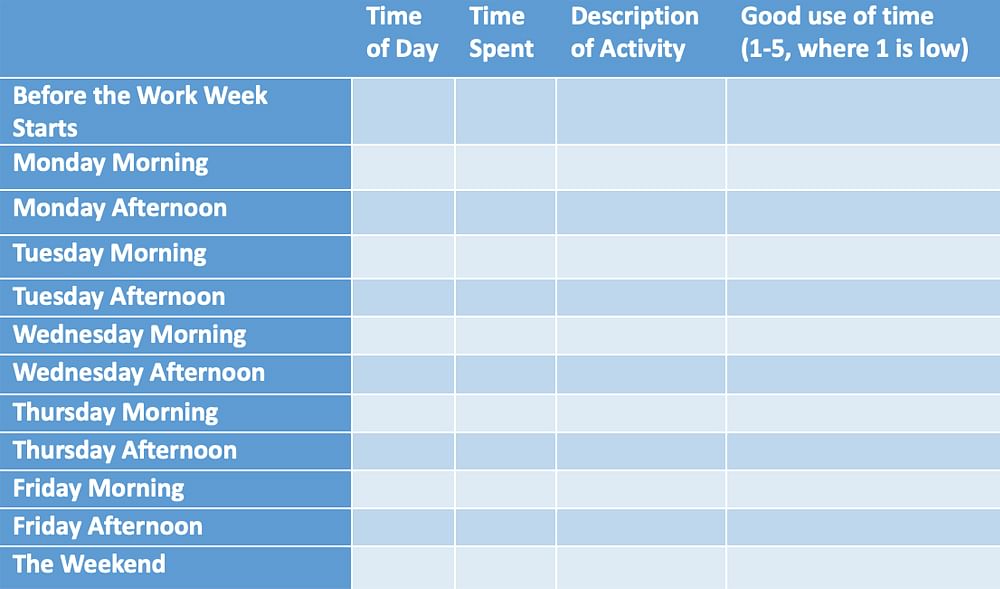The work I do with my team is centered around people. You can call it Human-Centered Design, Design Thinking, or any of the other popular terms. In this article, I’ll detail an exercise we use at the start of many of our engagements known as "A Day in the Life." The goal of a Day in the Life exercise is to understand how a customer perceives how they use their time during the day. This task is valuable as you can use the data to create Personas and Customer Journey Maps.
Why Would You Use a Day in the Life?
The Day in the Life activity brings a visual approach to analyzing the actions of an individual or a group. The activity can help substantially improve their effectiveness, efficiency, and enable optimal management of critical events in the workday of individuals in an organization. There are three essential stages of the activity:
- Preparatory work
- Interview with customers (two or more is ideal), asking each customer to complete the Day in the Life Template (see below)
- Assessment of the Day in the Life feedback, building a timeline that shows the typical activity based on the customer feedback
The outcome of completing a Day in the Life chart is a high-level view of a customer’s typical day. Note, the Day in the Life activity can be extended to run for a week or a month. Templates for Day in the Life, Week in the Life, and Month in the Life are included at the end of this article.
Questions a Day in the Life Answers
A Day in the Life activity will help you answer the following questions:
- On which activities are your customers spending their time?
- Does the way you start and end your day affect your focus and attention on the job?
- Are you doing the right tasks at the right time?
- Are your workloads in line with expectations?
- What is the balance between spontaneous and planned work?
- Are there any opportunities to redistribute tasks to better-qualified resources?
Going into a "Day in the Life" activity, it’s essential for you and your team to be clear on the questions you’re looking to have answered. In other words, a little pre-work goes a long way.
Pre-work
We use the following checklist when framing the Day in the Life assignment:
- What are you looking to address or highlight with the Day in the Life interview?
- Develop and maintain a tight brief.
- Keep to time.
- Assess the requirement and only invite individuals who are needed for the exercise
- Structure your thoughts and clearly explain the issue at hand
- What is the format to be followed and how would you design the solution approach?
- Should you cover one topic area or subsets?
- Should everyone work on everything or should we break into groups, each working on parts?
- One session or multiple sessions?
- Length of the session or sessions?
- Does the brainstorming form part of another activity?
You will see that many of the questions are open-ended in the checklist as you go into each assignment As we want to think intentionally about the interviewee, open items force us to pause and calibrate the interview to the person we’re meeting.
The 1-1 Interview with Your Customer
The most common method for conducting an interview is a 1-on-1 with the customer. When you meet with the interviewee, you’ll want to be clear about the purpose of the meeting. It’s useful to review the following:
- The use of a "Day in the Life" is to help them achieve a higher level of job satisfaction. While you can't promise immediate resolution and change the results of this process, it should help both you and management understand your unique challenges.
- The results and analysis of this process are 100 percent confidential and will never be used against them in any future review process.
- It's important they’re honest when completing the template.
- This is just the start of the process in helping you achieve greater job satisfaction. The plan going forward is to run these periodically so progress can be assessed.
The interviewee can complete the template, or you can ask questions and record their answers. My personal preference is to ask questions. It’s essential to thank them for their time after completing the interview and, if your budget can accommodate, give a "thank you" gift such as a gift card to a coffee shop.
Templates
The following are three templates you can use for:
- Day in the Life
- Week in the Life
- Month in the Life
You will need to determine which template to use for each engagement.
Day in the Life Template

Week in the Life Template

Month in the Life Template

Assess the Feedback
The focus of the feedback is to highlight the activities in the Day of the Life with an eye on the business problem being solved. Tools that complement a Day in the Life include Persona and Customer Journey Map.
I’ve found that the raw data by itself doesn’t tell a complete story. It’s worthwhile to have someone convert the data into a single, one-page infographic that illustrates the work and highlights key data points. Below are examples of infographics you can use. I’ve found that “gig” sites such as Fivrr.com are great places to find brilliant, low-cost talent to build infographics.
Examples of Day in the Life Diagrams Illustrated with Content Collect in the Templates Above
Day in the Life of a Developer

Source: catchyagency
Day in the Life of a Scrum Master

Source: 3back
Day in the Life of a Public Relations Pro

Source: ragan
Next Steps
Like all things, running “Day in the Life” exercises take practice. Keep doing them and you will find that the value will increase in the content you generate. As mentioned above, the “Day in the Life” exercise complements Persona and Customer Journey Map development.
If you are looking to learn the fundamentals of design thinking including approaches like ‘Day in the Life’, our comprehensive Design Thinking Certification Training Course is the right fit for you. Learn the key concepts of one of the most sought-after problem-solving methodologies for the modern business era with this course.
